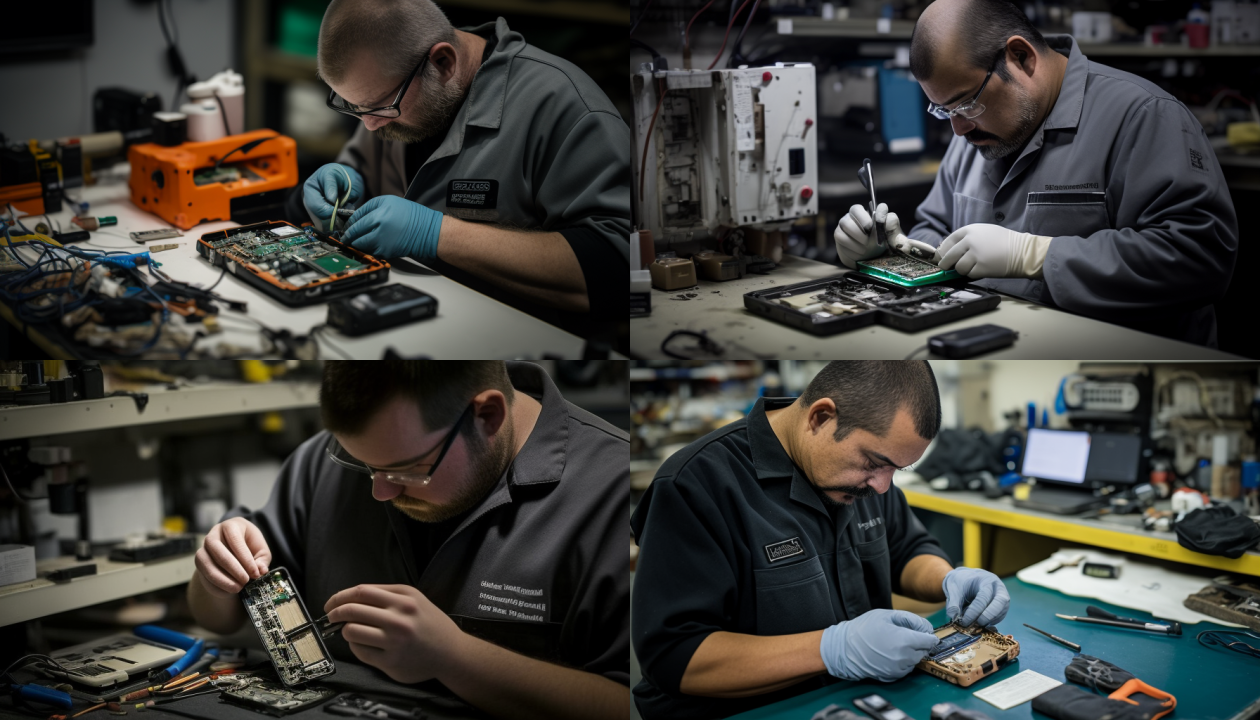As smartphones have become ubiquitous, so too has the need for repair services. The phone repair industry is influenced by a variety of factors, including local economies, consumer behavior, and technological advancements. This article explores the trends in phone repair across different regions, highlighting the unique challenges and innovations present in each area.
North America
In North America, the phone repair market is characterized by a strong DIY culture and a growing awareness of sustainability. As consumers become more environmentally conscious, many are opting to repair their devices rather than replace them. This trend has led to a surge in repair shops, both independent and franchise-based, as well as online platforms that sell repair kits and offer tutorials.
The introduction of Right to Repair legislation in some states is also shaping the market. These laws aim to provide consumers and independent repair shops access to the necessary tools and parts to perform repairs. While the movement is gaining traction, the major manufacturers are still lobbying against it, leading to a dynamic and evolving landscape.
Moreover, the rise of high-end smartphones has increased the complexity of repairs, with many devices requiring specialized knowledge and equipment. As a result, repair technicians are increasingly seeking certification and training to keep up with advancements in technology.
Europe
In Europe, the phone repair market is heavily influenced by regulatory frameworks that promote sustainability and consumer rights. The EU has been at the forefront of advocating for repairability, with policies aimed at reducing electronic waste. This has resulted in a stronger emphasis on designing devices that can be easily repaired.
In countries like France and Germany, there is a robust market for independent repair shops. These shops often emphasize their ability to offer repairs that are both environmentally friendly and cost-effective compared to authorized service centers. The “repair café” movement, which encourages community members to bring in their broken devices for repair, is gaining popularity, further reinforcing the culture of repair over replacement.
The trend toward modular phones is also emerging in Europe, with manufacturers like Fairphone leading the charge. These devices are designed to be easily disassembled and repaired, appealing to a growing segment of environmentally conscious consumers.
Asia-Pacific
The Asia-Pacific region presents a diverse landscape for phone repair, influenced by rapid technological advancements and varying economic conditions. In countries like Japan and South Korea, where smartphone penetration is high, consumers often expect quick and efficient repair services. This has led to the rise of on-demand repair services, where technicians travel to customers’ locations to fix devices.
In contrast, countries like India and Indonesia are experiencing a different trend. The market is primarily driven by affordability, with many consumers opting for budget-friendly devices. As a result, repair shops often focus on cost-effective solutions and may use third-party parts to keep prices low. The availability of unbranded spare parts is a significant trend in these markets, enabling repairs at a fraction of the cost of original components.
The Asia-Pacific region also witnesses a growing interest in phone refurbishing. Companies are increasingly investing in refurbishing operations to extend the lifecycle of devices, catering to budget-conscious consumers while also addressing environmental concerns.
Latin America
In Latin America, the phone repair market is shaped by economic factors and access to technology. Many consumers in the region face challenges due to the high cost of new smartphones, making repair services an attractive option. Small, independent repair shops are prevalent, often providing personalized service and quick turnarounds.
A notable trend in Latin America is the rise of social media as a marketing tool for repair businesses. Many repair shops use platforms like Instagram and Facebook to showcase their work and attract customers. This grassroots marketing approach is particularly effective in regions where traditional advertising channels may be less accessible.
Additionally, there is a growing demand for training and certification programs for technicians. As the market matures, consumers are becoming more discerning and are looking for qualified professionals to handle their repairs. This has led to an increase in partnerships between repair shops and training institutions.
Middle East and Africa
In the Middle East and Africa, the phone repair landscape is marked by a mix of rapid growth and challenges. With a high rate of smartphone adoption, particularly among younger demographics, the demand for repair services is significant. However, the availability of skilled technicians and quality parts can vary greatly between urban and rural areas.
In urban centers, the trend is moving toward premium repair services, often offered by specialized shops that cater to high-end smartphones. These shops emphasize quality and warranty, attracting consumers willing to pay for assurance and expertise.
Conversely, rural areas may rely on informal repair networks, where untrained technicians use makeshift tools and techniques. While this can result in lower costs, it also raises concerns about the quality and longevity of repairs. As mobile technology continues to evolve, there is a pressing need for standardization and training to improve repair practices across the region.
Conclusion
The phone repair industry is evolving rapidly, influenced by regional differences in consumer behavior, economic conditions, and technological advancements. In North America and Europe, there is a strong push towards sustainability and regulatory support for repairability. In contrast, the Asia-Pacific region is marked by a blend of on-demand services and a focus on affordability, while Latin America thrives on grassroots marketing and personalized service.
As the global market continues to mature, the need for skilled technicians, access to quality parts, and an emphasis on consumer rights will remain crucial. The trends outlined above highlight the dynamic nature of the phone repair industry and the importance of adapting to local conditions while promoting sustainable practices. Ultimately, the future of phone repair will be shaped by the collective efforts of consumers, repair professionals, and policymakers around the world.














